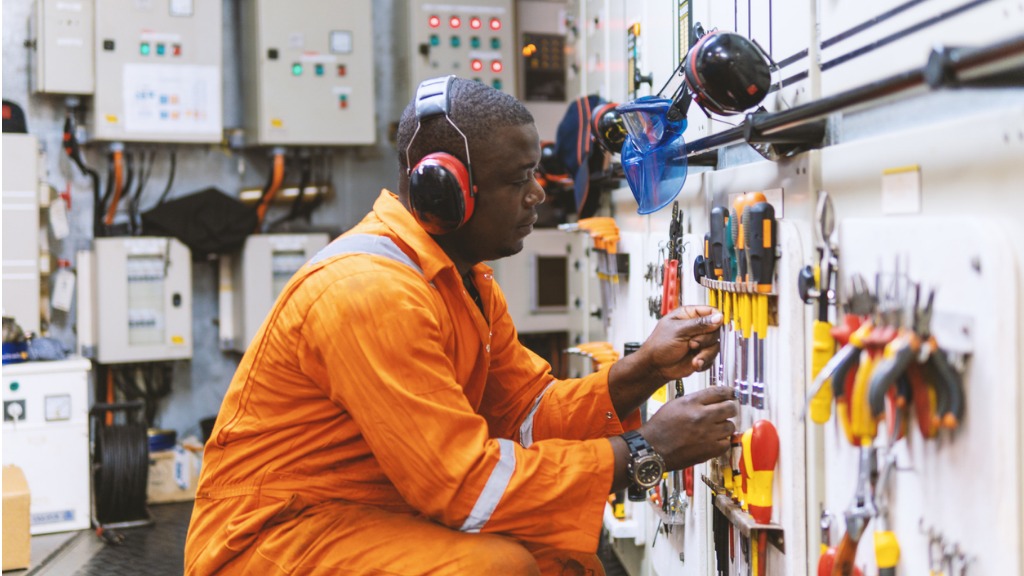Roller, Chain, and Belt Conveyors

Thermal imaging is especially useful for monitoring low-speed mechanical equipment like conveyors. Overheating signals the impending failure of many different electrical and mechanical conveyor components, from motors, gearboxes, and drives to bearings, shafts, and belts.
Conveyors are essential to productivity, from light-duty package-handling roller conveyors in distribution centers to overhead and towline chain conveyors carrying automobiles through assembly to massive ore-handling belt conveyors.
To avert production stoppages due to conveyor failure, progressive companies use predictive condition monitoring technologies to monitor those assets. The objective is to detect impending failures before they occur, and take corrective action during scheduled production shutdowns.
One of those technologies is thermography, or IR Imaging. Thermal imagers capture two dimensional images representing the apparent surface temperatures of conveyor components, and are excellent tools for monitoring conveyors.
What to check?
While they are running, monitor conveyors that are critical to your operations, i.e., those whose failure would threaten people, property or production. Be sure to scan the conveyors’ drives— electric motors and gearboxes— and follow the guidelines for these units spelled out in earlier Fluke Application Notes.
Also with the conveyors running, check the conveyor chain on any critical towline, powered overhead and power-and-free conveyors used in your operations. In addition, scan the bearings in the carrier rolls of powered roller conveyors and in the idler rollers and drive, tail and take-up pulleys on your critical belt conveyors. And, remember to check the belts themselves.
What to look for?
In general, look for hot spots and pay special attention to differences in temperature of similar components operating under similar conditions—similar speeds, similar loading, etc. For example, if the end bearings in the same conveyor roller or pulley or the bearings on the same side of adjacent rollers on the same conveyor are running at different temperatures, the hotter one may be trending toward failure.For monitoring some conveyor components (e.g., drives), IR imaging complements other condition monitoring technologies such as oil analysis, vibration monitoring and ultrasound. However, tow chains under the floor and elevated chain conveyors, including power-and-free conveyors, are often most easily and effectively monitored from a distance using thermal imaging. Check the chain as well as roller turns and curves. Overheating chain or rollers may signal lubrication or wear problems.
IR imaging is an ideal monitoring technique for powered roller conveyors, roller-bed belt conveyors and bulk-handling belt conveyors with idlers, whether these conveyors are elevated or not. On such conveyors, the bearings are usually too small, too numerous or too inaccessible—perhaps all three—to be effectively screened by other strategies.
On belt conveyors, check for belts rubbing on the conveyor frame or other conveyor part. Belt rubbing may be caused by misalignment or broken conveyor components and is best detected, if not by the naked eye, by an IR image of the heat generated by the resulting friction. Rubbing can destroy an expensive conveyor belt in short order.
A good approach is to create a regular inspection route that includes all critical conveyors. Then, save on a computer a thermal image and associated temperature data of each area scanned and track measurements over time. That way, you’ll have a baseline for comparisons with subsequent images. They will help you determine whether a hot spot is unusual or not, and, following repairs, help you verify that the repairs were successful.
Theory and analysis
Since the medical machine’s internal circuits operated on low voltage DC, the internal power supply would have a diode/capacitor input circuit that required a certain minimum peak voltage for proper operation. The nameplate on the medical machine showed the machine needed a supply voltage between 100 and 135 V rms AC. The engineers who designed the machine and specified the nameplate assumed the supply voltage would be a sine wave, so the minimum peak would be 141 V peak (100 x 1.41).
Since the measured value of the peak input voltage was only 135 V, the machine was running on a peak voltage that was already 6 V below the absolute minimum required. When the fan was turned on, the surge current drawn by the fan motor further reduced the voltage to a point where the power supply of the machine went out of regulation. This is what caused the machine to reset.
What represents a "red alert?"
Equipment conditions that pose a safety risk should take the highest repair priority. However, the imminent failure of any critical production asset constitutes a red alert. Consider using key safety, maintenance and operations personnel to quantify “warning” and “alarm” levels for these assets. (Note: alarm levels for specific equipment can be set on select Fluke handheld thermal imagers.)
What's the potential cost of failure?
Conveyors are keys to productivity in so many industries that it is difficult to speak generally about the cost to a company from the failure of a critical conveyor. However, consider a 24-hour distribution center that handles roughly 8,000 cartons of books per day. If the average book order is US $50, a failed conveyor could result in production delays amounting to more than US $15,000 an hour.
Follow-up actions
Whenever you use a thermal imager and find a problem, use the associated software to document your findings in a report that includes a digital photograph as well as a thermal image of the equipment. That’s the best way to communicate the problems you find and to suggest repairs. In general, if a catastrophic failure appears imminent, the equipment must either be removed from service or repaired immediately.









